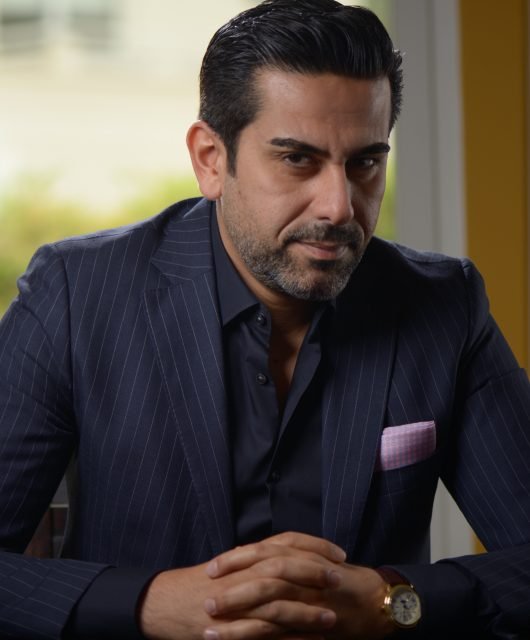The Must-Dos In Brand Crisis Management: Q&A With Weber Shandwick’s Donya Abdulhadi
Brands are constantly challenged with a diverse magnitude of crises that erupt from the evolving market dynamics and consumer needs . Some brands are able not only to survive a crisis but also navigate it into a PR win, emerging stronger than ever, while others are destroyed, forced into a merger or even an exit. Between brand familiarity and brand favourability, lies their ability to leverage these crises. The Brandberries has exclusively interviewed Donya Abdulhadi, Director of Strategy at Weber Shandwick MENA, for her take on the must-dos of brand crisis management.
BB: Reputation is considered one of a brand’s most valuable assets. One of the core areas where brands and PR cross paths is reputation management. How do PR agencies help brands build a solid and credible reputation?

DA: Great question. First, there is a myth or at least a misunderstanding that brand management and PR are two distinct fields that sometimes cross over.
Under the marketing umbrella, PR plays a deep, long-term role in brand management alongside other marketing disciplines: including advertising, market research and digital marketing. In my experience working across all these disciplines and journalism, I’ve found that the difference lies in the ‘how’ each of these marketing disciplines contribute to a brand’s narrative strategy across audiences. The advantages public relations has over the other disciplines lie in the depth of its reach; the relationships it builds; its ability to tailor stories across touch points; and the access it provides.
Other marketing disciplines have differing strengths. For instance, branding crystallises a brand’s purpose; advertising generates awareness and emotional pull and digital engagement can narrowly target, amongst many other advantages. PR seeks to persuade, to seal a brand’s reputation with individual media editors, lobbyists, sector leaders, event directors, summit founders, politicians and civil society organisation members; to protect equity and to build credibility. In a world that is increasingly cluttered with media channels and information, I believe PR will play a much more important role than other disciplines in persuading audiences.
BB: Many brands are faced with crisis that can give a hard blow to its reputation. Effectively managing crisis when it arises can become a make it or break it to any brand. Can you give us some insights on what are the pillars of an effective crisis management strategy?
DA: A driving mantra that has worked for me in previous situations is to place equal importance on the diagnosis of a crisis as on implementation of the strategy. In other words, understanding exactly what’s at stake is equally as important as what you do. Today in our industry, it is often the latter that is prioritised, placing more emphasis on execution than problem-solving. As seasoned practitioners, we are at risk of taking an ‘auto-pilot’ approach when pre-drafting content, putting together playbooks and rehearsals.
Beyond these hygiene factors and ‘must-do’s’ we must remember that every crisis is different. An employee scandal is different from a bad business decision; a product failure is different from a senior executive’s gaffe; an act of negligence is different from a corruption allegation. This means that there isn’t a ‘one size fits all’ solution as the principles of proactivity, transparency, and fast response may be the best approach for some crises but not others, or at least may have different emphasis.
BB: The digital transformation age has given reputation and crisis management a whole new dimension. Reputations can be affected negatively with one single social media post. In a nutshell, and from Weber Shandwick’s strategy manual, what are the dos and don’ts when handling virally blasted crisis?
DA: In a nutshell,
Do’s:
Pre-crisis:
Prepare: Do the valuable background work pre-crisis – a ‘must have’ when onboarding a new client or renewing a contract. Simulate scenarios; train key spokespeople; pre-draft content and get your social media channels in order. Establishing the right listening and monitoring tools and procedures is also key. Increasingly crises are starting online before making their way to mainstream media.
During crisis:
Problem identification: Spend the crucial, early period diagnosing the issue to ensure efforts are focused and effective.
Post-crisis:
Recover: Have a system for recovery aligned to your crisis strategy.
Don’ts:
- Succumb to (understandable) ‘client panic’
- Be hasty
- Develop vague content
- Neglect employees.
BB: Brands work in different cultural contexts. Does cultural differences affect crisis management?
DA: Cultural context permeates all aspects of the way a brand is managed, including crisis strategy. I would, however, advise brands operating in multiple countries to equip themselves early on with insight into audience attitude, motivations, and experience of their category’s products and services. Am still surprised how little multinational clients and agencies invest in understanding the country-level and individual-level realities of the communities within which they operate. I always tell my clients that insight is not only valuable during the campaign development phase, but when mitigating problems later. Without proper insight, if a crisis hits it will be much harder to manage. Disingenuous, ‘doctored’ content and vague statements are a hallmarks of a lack of insight.





